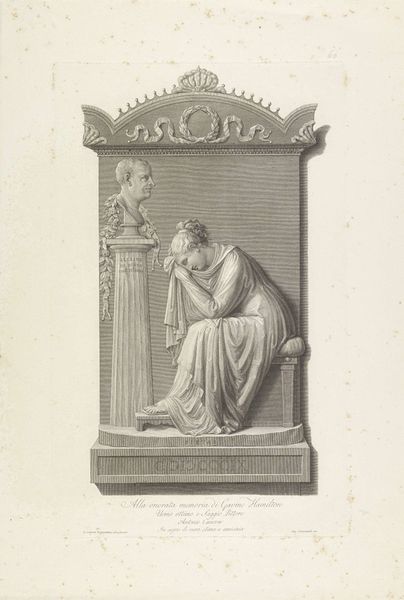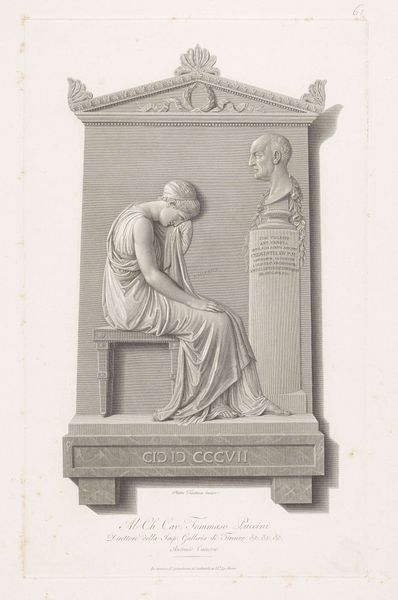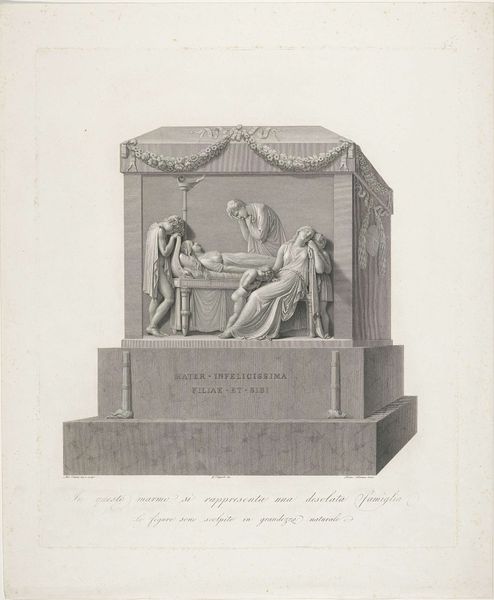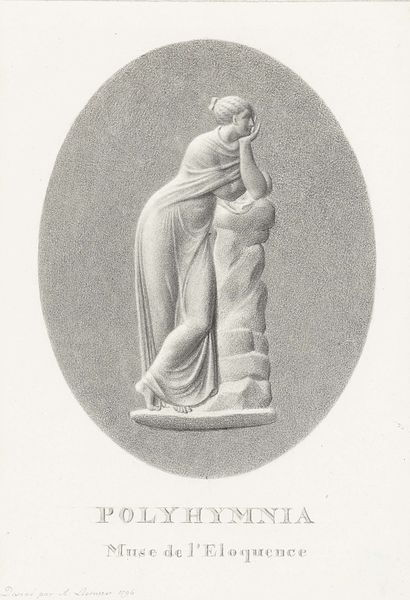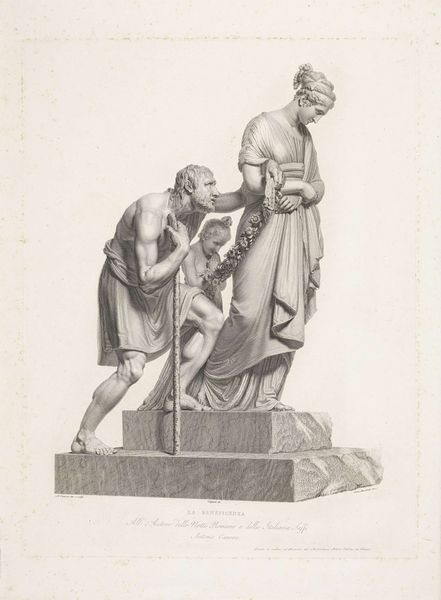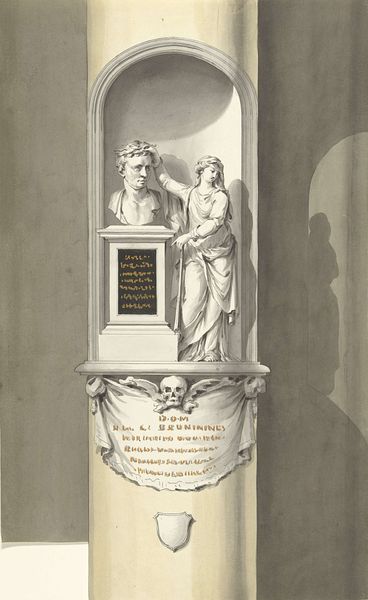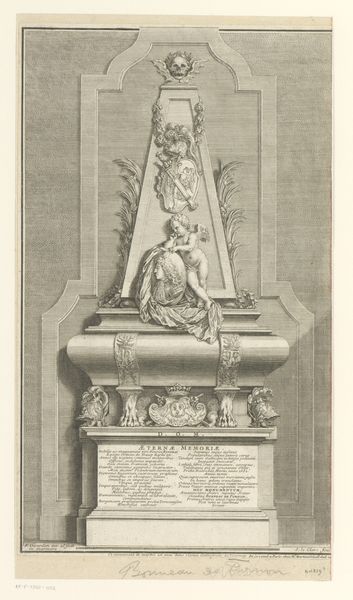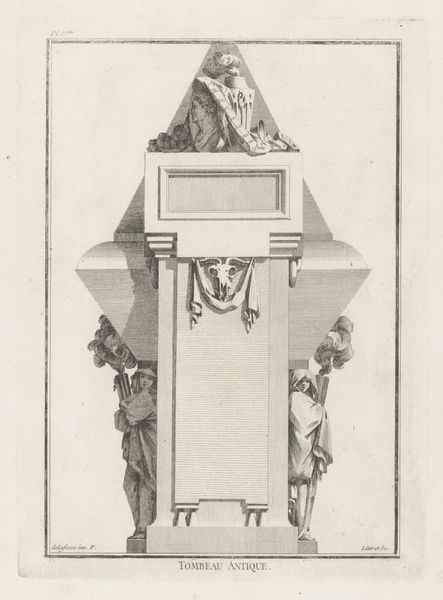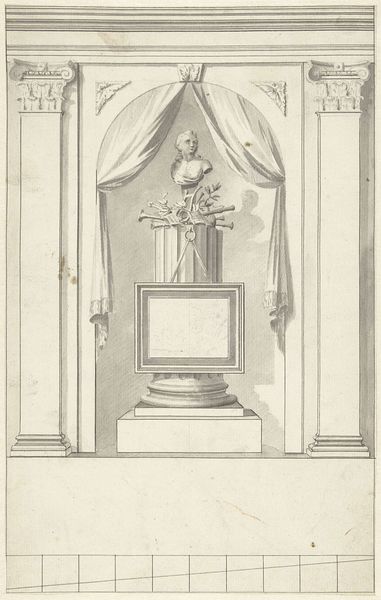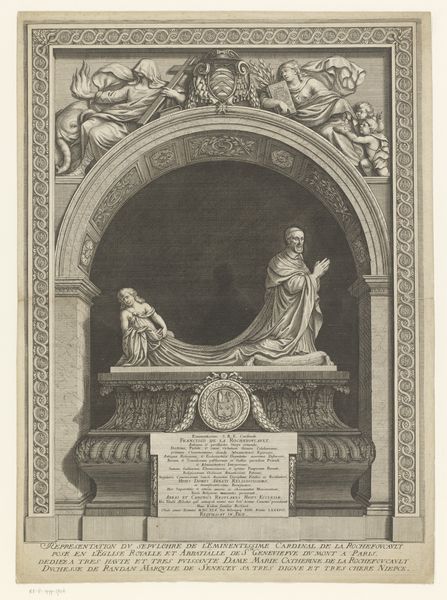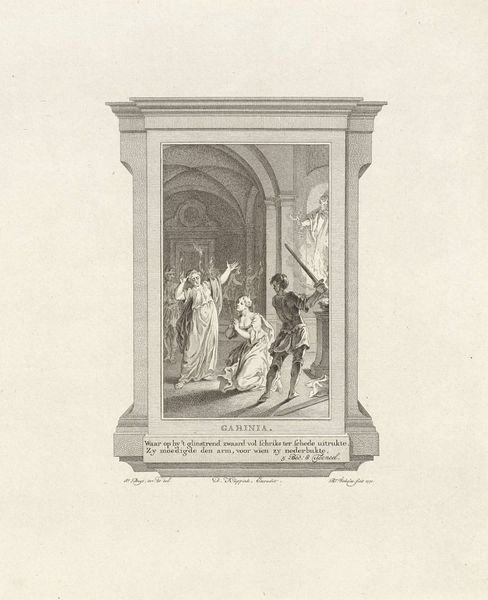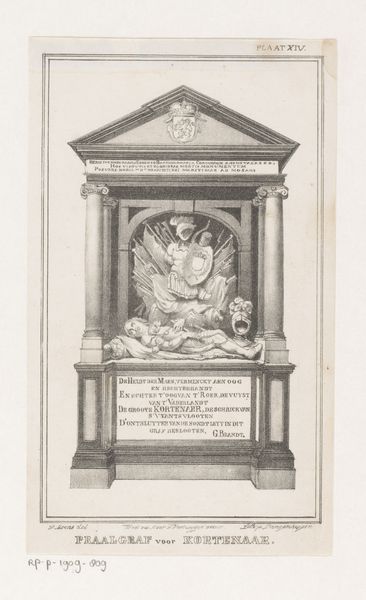
drawing, relief, graphite, marble
#
portrait
#
pencil drawn
#
drawing
#
neoclacissism
#
pencil sketch
#
relief
#
charcoal drawing
#
pencil drawing
#
graphite
#
pencil work
#
history-painting
#
marble
#
graphite
Dimensions: height 415 mm, width 255 mm
Copyright: Rijks Museum: Open Domain
Curator: This work certainly strikes a somber chord, doesn't it? A Neoclassical monument rendered in pencil and graphite, emanating grief. Editor: Indeed. The desaturated palette contributes significantly to that feeling. It's almost ghostly. Tell me more about the context here. Curator: What we're observing is the "Grafmonument van senator Giovanni Falier," or Grave monument of Senator Giovanni Falier. This drawing by Pietro Bonato, created between 1808 and 1822, depicts a memorial design featuring Falier’s bust and a mourning figure. Its severe and formal language mirrors Neoclassical ideals then ascendant. Editor: The image of the woman weeping is powerful. What are the classical precedents and resonances of such iconography? It evokes a Pieta. Curator: That parallel holds. Consider, for instance, the conventional Roman gesture of grief—covering the face. It signals not only profound sorrow but also hints at veiled, interior worlds. Note too how Bonato's work captures more than a single instance of sadness; it encapsulates a period, expressing the tenor of loss during post-Napoleonic social shifts in Venice. Editor: Are there layers of meaning, particularly considering Venice's political climate during that era? Were commemorative monuments like these invested with political messaging or coded references? Curator: Certainly. After the fall of the Venetian Republic, these forms of remembrance provided some social stability, channeling personal bereavement to something of social importance. A figure like Falier becomes representative beyond individual identity, subtly implying continuity and fortitude in times marked by enormous upheavals. Editor: So, it's less about just personal mourning, more about upholding memory to define and preserve what endures after massive societal changes? Curator: Precisely. Herein lays the brilliance: drawing the focus not on just the absence created by the loss, but on what needs active, enduring recognition in face of these gaps and ruins. Editor: The stoicism conveyed is so interesting. We are looking at sadness represented with control—grief transformed to a symbol with clear cultural messages. Curator: That captures the essence precisely, doesn't it? It showcases the complex intersection of emotional restraint and communal meaning within early 19th-century society, viewed via Bonato’s drawing of this fascinating memorial.
Comments
No comments
Be the first to comment and join the conversation on the ultimate creative platform.
